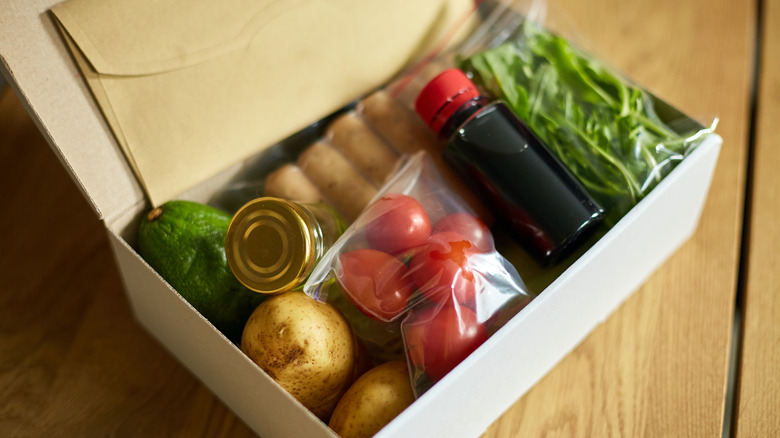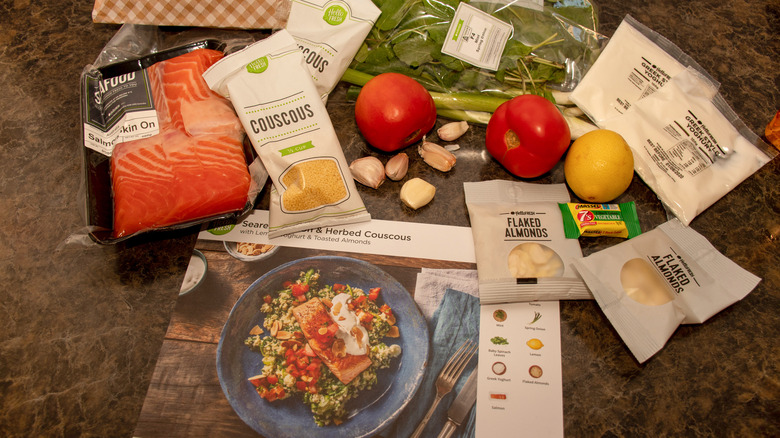The Potential Food Safety Issue In Meal Delivery Kits, According To Study
On the whole — and unless you like going food shopping yourself — there don't seem to be many downsides where meal kits are concerned. To those who aren't into cooking or might be a bit unsure about being in the kitchen, the kits are shortcut to making healthy meals with little to no prep. Industry analyst Burt Flickinger tells Food Business News that these kits are hit with a younger demographic who might be inexperienced and apprehensive in the kitchen, saying "One of the great merchants I know recently said that the grandparents' generation would make tuna casserole, the parents' generation would make tuna salad, and this generation can barely make a tuna fish sandwich out of a can."
But that lack of kitchen savvy may mean that meal kit consumers are also overlooking a critical problem involving these deliveries. A study by the North Carolina State University shows that most kits contain perishable food items, which could have been exposed to temperatures that exceed the safety zone set by the Food and Drug Administration. As such, these items may have been exposed to potentially harmful bacteria, per Food Safety News.
50% of deliveries tested contained potentially unsafe meat or poultry
Quality Assurance Magazine reports that researchers looked at 72 deliveries from 12 of the country's leading providers involved in the business of delivering ready-to-eat meals, meal kits, or perishable foods — and what they found might give meal kit subscribers cause to think twice about placing another order.
Among the findings: more than ¾ of the boxes delivered had at least one item that was warmer than the 40 degrees F limit recommended by the FDA and 50% of the companies sent boxes with meat or poultry that was even warmer. Joseph Battoe, the CEO of Varcode — a company that monitors temperature sensitive products — said, "Meal kit companies and online grocers experienced unprecedented growth in 2020. And while the popularity of home delivered foods and meal kits is still increasing, few details are known about the journey of these packaged foods from when they leave the vendor to when the foods are delivered and prepared in consumer homes."
There is a limit to how long perishable items can sit outside the fridge
Under current guidelines, the FDA recommends that you allow perishable items to sit at room temperature for no longer two hours, and if an area is warmer — say above 90 degrees F – perishable items can at most sit outside the refrigerator for an hour. The goal, the FDA says, is protect yourself from exposure to bacteria such as salmonella, e-coli, and Clostridium botulinum (aka to stop you from getting food poisoning).
Because of this, Battoe points out that it is important to know how long perishable items have sat outside the 40 degree F safe zone. "Knowing whether it was for 10 minutes or more than four hours is important for determining food safety. At present, there is no oversight or regulations, so consumers are left to trust the design, packaging, and shipping policies of the vendor and delivery companies, and, given the high temperatures noted in this project, it appears there is room for improvement," he said, per Quality Assurance Magazine.


